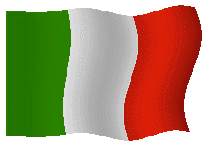
THE HOME WINE COURSE ©

Introduction:
After colonization by the Etruscans and the Greeks the peninsula now known as Italy became the primary region of Europe to continue advancing the glorious vitis vinifera family of grapevines. Many varietals established in ancient times were brought over from Greece which are still grown today such as the Greco di Tufo and Lachrymachristi (literally "tears of Christ"). Undoubtedly Italy's mild Mediterranean climate gave rise to indigenous varieties of vinifera as well. In his "Naturalis Historia", Roman author Pliny speaks of 195 different kinds of wine - over half of which were produced in Italy alone! No other wine-producing nation on earth can compare with Italy's diverse wine industry when it comes to the amazing number of unique wine types being made. Every province in the country has its own style of wine fashioned over centuries of trial and error. In today's Chardonnay/Cabernet mindset it's refreshing to have this plethora of interesting Italian wines available for our daily repast. We have carefully chosen six representative vineyard regions in Italy to introduce you to this country's vast array of excellent wines.
(1) Piedmont
Piedmont is located in the extreme northwestern segment of Italy among the picturesque southern foothills of the Alps Mountains. Piedmont's western border is with France and the border with Switzerland is just to the north. The cities of Torino (north) and Genoa (south) are the nearest population centers. While not being the largest wine-producing province in the country, Piedmont can lay claim to providing perhaps the greatest variety of high quality wines. The most noteworthy wines here are red - particularly the robustly tannic, long-lived wines of Barolo, Barberesco, and Gattinara made with the little-known Nebbiolo grape. These violet-scented, plummy Nebbiolo wines are followed in importance by the lighter reds Dolcetto (soft-textured with lovely currant/blueberry flavors) and Barbera (rather tart cranberry and cherry flavors). These latter two are labeled with the varietal name most prominent followed immediately by the place of origin (ie. Dolcetto d'Alba or Barbera d'Asti). A few bone-dry, citrusy whites are also produced in Piedmont, including the elegant, but pricey, Cortese di Gavi (densely mineral) and the rarely seen Arneis and Favorita (citrus and pear flavors). Sweet Moscato wines are also found here made in the frizzante (spritzy) or spumante (full effervescence) styles. Classifications of high quality red wines in Piedmont include the DOCG (denominazione di controllata e garantita) districts of Barolo and Barberesco, single- vineyard designations (ie. Cannubi or Rocche), Riserva and occasionally Riserva Speciales designations (aged in Slavonian oak and French barrique three and four years respectively).
Tasting Notes:
(2) Northeast
The northeastern Italian provinces of Trentino/Alto Adige, Friuli, and the Veneto, are bordered by the Austrian Alps to the north and the Adriatic Sea to the south near the famous city of Venice. These provinces are taken as a single subject due to their wine production similarities. Except for the wines of Bardolino and Valpolicella, districts located quite close to the city of Verona, white wines are most favored thoughout these three regions. The further north and east you go, the more likely it is for wines to be labeled relative to the principal grape used in the production. The whites are almost invariably made in the classic European style: light, simple (no oak-aging), and minerally dry. Grape varieties utilized here are quite international, including well-known varietals such as Riesling, Gewurztraminer, Pinot Bianco (Pinot Blanc), and Sauvignon Blanc. Also in the Germanic class but bone-dry are the Tocai, Sylvaner, and Muller-Thurgau. Garganega is the principal grape of Soave wines, cut with a little Trebbiano. Increasingly, Chardonnay is making its presence known in these districts as well. However, it is the Pinot Grigio that is most popular here with production levels soaring in recent years to meet burgeoning consumer demand. The best (and most expensive) of Italy's Pinot Grigios comes from the Friulian sub-district of Collio. A late-harvest, nectar-like white of note in the Northeast is called Vino Santo made with the rare Nosiola grape, partially dried and fermented over several years. Decent, yet rather thin, moderately herbal red wines are made here including Cabernet Sauvignon, Merlot, and Pinot Nero (Pinot Noir). Rarely seen reds include the Marzemino, Lagrein, and Teroldego. The greatest red of the Northeastern provinces, made in Valpolicella from partially-dried Rondinella and Corvina grapes, would undoubtedly be the high-alcohol, long-lived Amarone and its little cousin, Ripassa (a half-way Amarone made with the left-over dried must from an Amarone fermentation added for increased character).
Tasting Notes:
(3) Tuscany
Tuscany is located in the central/western portion of Italy, primarily south of Florence, north of Rome, and west of the Appenine Mountains. The Tyrrenian Sea forms the coastal border to the west. Wine production is voluminous here with the expansive Chianti region most prominent. This hilly province is red wine country predominantly. The red varietal of supreme quality in Tuscany is the mid-weight, raspberry-flavored Sangiovese. It forms the major portion of the blend used in making Chianti wines. The red Canaiolo and two white grapes, Trebbiano and Malvasia, were part of the traditional Chianti blend but aren't required by law now and are losing favor rapidly. Chianti wines are typically labeled according to their location within the province (ie. Chianti Classico - central, Chianti Fiorentino - near Florence, and Chianti Colli Senesi - near Siena). Finer clones of Sangiovese are used to make limited production DOCG wines such as the monumental Brunello di Montalcino, Vino Nobile di Montepulciano, and Morellino di Scansano. The best white wine of Tuscany comes from around Michelangelo's hometown of San Gimignano, made with the exquisitely dry Vernaccia grape. Some pricy, French oak-aged Chardonnays that are well worth trying are made in limited quantities as well. An established trend in Tuscany is to make greater use of Cabernet Sauvignon and Merlot and other distinctively French varietals in blends along with Sangiovese or by themselves. These classic international, high-quality vino di tavolas are commonly known in the United States as super Tuscan wines. Quite expensive labels of note in this super Tuscan style are Sassicaia, Ornellaia, and Solaia. Traditionally, quality in Tuscany is indicated by DOCG status and the occasional Riserva designation but this system doesn't tell the whole story of the innovative modern wines of Tuscany.
Tasting Notes:
(4) Abruzzi
The Abruzzi wine region is located on the opposite coast east of Rome in the foothills of the Appenine Mountains with the Adreatic Sea along its rugged shores. Few wines are produced here because of the mountainous terrain, but one red has particular significance in the U.S. market. This red is the almost always inexpensive Montepulciano d'Abruzzo, made with the Montepulciano grape. This is one of Italy's best light to medium-bodied reds rivaling simple Chianti at its best. The white Trebbiano produces an adequately quaffable dry wine in this district called Trebbiano d'Abruzzo also always quite affordable. The wines mentioned here have the Italian government's respectable DOC quality status and the Montepulciano d'Abruzzo can sometimes be found in a heavier Riserva style.
Tasting Notes:
(5) Apulia
Apulia's southeastern geographic location forms the heel of the boot of Italy. Wine has always been produced here but only within the last twenty years or so has the level of quality been much admired outside of the region. Inexpensive reds are the mainstay in Apulia, with hearty grapes like Primitivo (a cousin of California's Zinfandel), Aleatico, and Negroamaro fashioned into blends or sometimes produced as single varietal wines. These indigenous grape types are responsible for intensely rustic wines that represent the general food-worthy style of Italian winemaking so well. This is the region where the increasingly popular Salice Salentino red and its excellent Notarpanaro stablemate are made. Other reds include the humble Aleatico di Puglia, the Castel del Monte, and the Rosso di Cerignola. Whites (including Chardonnay) and the occasional full-flavored rosato (rosé) are also made here but are seldom seen in the United States.
Tasting Notes:
(6) Islands (Sicily & Sardinia)
The two major islands of Italy, Sicily (southwest of the mainland off the toe of Italy) and Sardinia (west of central Italy) are large enough islands to have thriving wine industries of their own. In fact, the historical record of winemaking in Italy places Sicily ahead of the mainland due to early colonization efforts there. Julius Caesar said of a Sicilian wine called Mamertino once, "If someone should ever give you an amphora of Mamertino, call it what you like, providing you call it the most famous of wines!" Today Sicily ranks third in volume among wine regions in Italy and quality levels have been rising steadily. Varietals here are too numerous to give a complete listing and almost all of them are indigenous. Whites do best in torrid Sicily (both dry and sweet styles, particularly the mineral-rich, citrusy Insolia), but there are many fine reds (using the spicy, deeply-flavored Nero d'Avola grape) and a few excellent rosatos as well. The fortified wines of Marsala (made in both sweet and dry styles) are Sicilian originals (used to make chicken or veal Marsala or used simply as dessert wine). White wine is also favored in Sardinia. Varietals include the elegant, dry Vernaccia, and the fruity, yet crisp, Vermentino. Particular whites to look for when traveling to Sardinia include the rare Nuragus de Cagliari, and the sweet Nasco, Moscato, and Malvasia wines, also from the Cagliari area. Reds of note include the smooth Cannonau di Sardinia, the cherry-flavored Monica di Sardinia, and the pleasantly bitter Terralba, made with a blend of Cannonau, Tavale, and Pascale grapes.
Tasting Notes:
